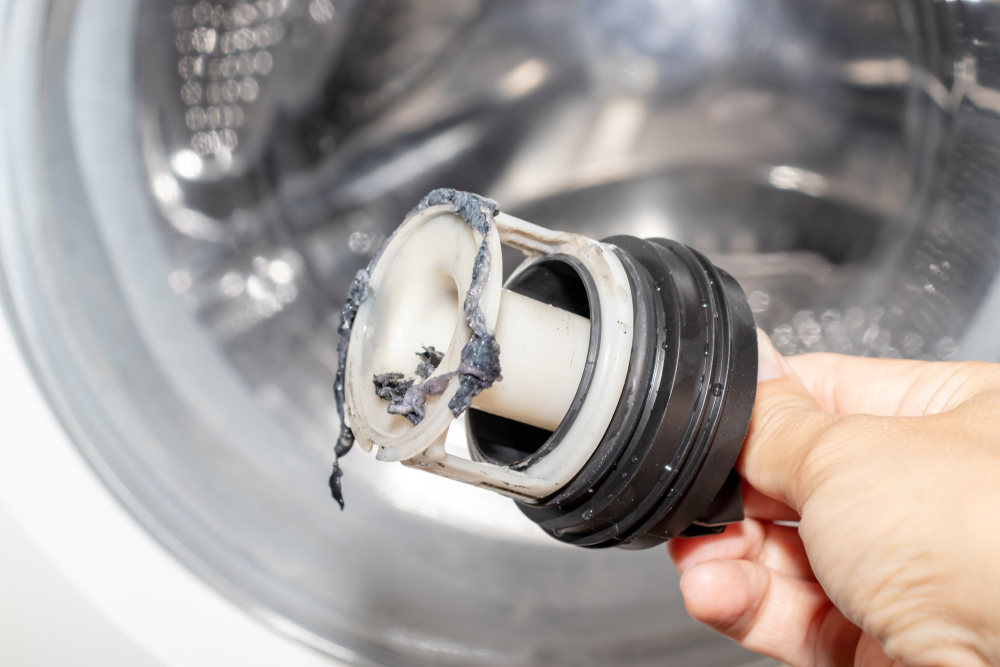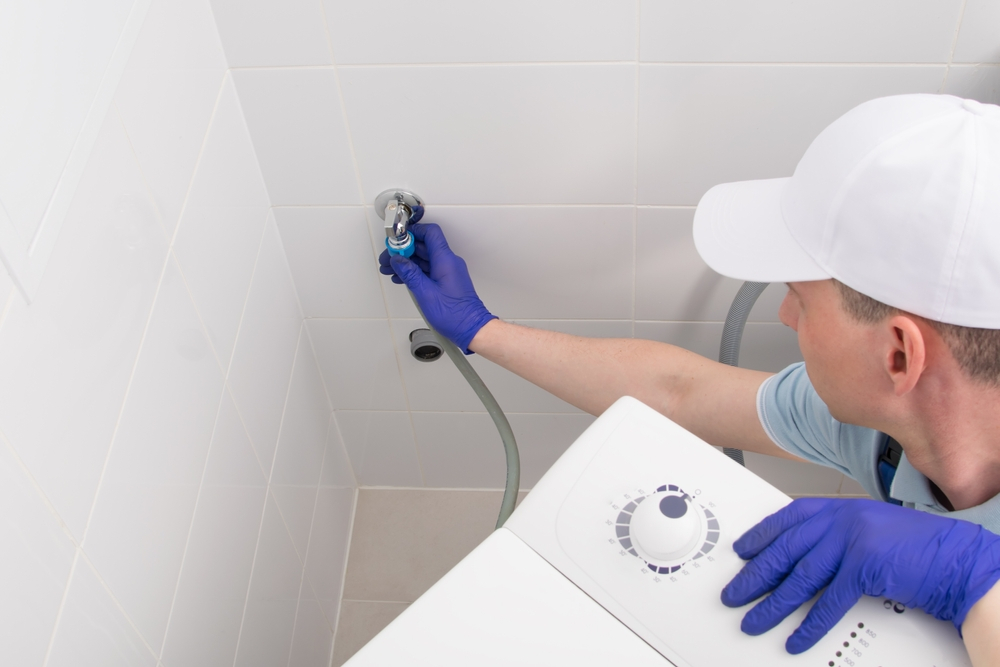Washing Machine Drain Is Clogged: How to Tackle a Clogged Washing Machine Drain in 5 Easy Steps
Washing machine drain is clogged is a common headache for many homeowners. It’s the kind of nuisance that can turn a routine chore into a major hassle. Imagine the frustration of having your laundry piled up while your machine refuses to drain properly. Fortunately, addressing this issue doesn’t have to be daunting. With just a few simple steps, you can have your washing machine back in action in no time. In this comprehensive guide, we’ll walk you through the process of unclogging your washing machine drain efficiently, providing detailed explanations and tips along the way. Let’s dive into the five easy steps that will save you from the inconvenience of a clogged drain.

Step 1: Gather necessary materials
Before diving into the unclogging process, it’s essential to gather the right tools and materials. You’ll need rubber gloves to protect your hands from any grime or debris you encounter. A plunger is a must-have for dislodging clogs with suction power. Additionally, a plumbing snake proves invaluable for reaching deep into the drain to break up stubborn blockages. Finally, vinegar serves as a natural solution to dissolve buildup and odors. Having these items on hand will streamline the unclogging process and ensure you’re prepared for any scenario.
Rubber gloves are essential for protecting your hands from dirt, grime, and any potentially harmful substances you may encounter during the unclogging process. They provide a barrier between your skin and the unpleasant elements lurking within your drain.
A plunger is a versatile tool that uses suction power to dislodge clogs. It works by creating pressure and forcing air or water through the drain to break up obstructions. When selecting a plunger, opt for one with a sturdy handle and a wide, flexible cup for maximum effectiveness.
A plumbing snake, also known as a drain auger, is designed to reach deep into pipes to break up tough clogs. It consists of a long, flexible cable with a coiled end that can navigate through twists and turns in the plumbing system. When choosing a plumbing snake, look for one with a durable construction and a length sufficient to reach the clog in your washing machine drain.
Vinegar is a natural cleaning agent that can help dissolve buildup and odors in your washing machine drain. Its acidic properties make it effective at breaking down organic matter, such as soap scum and grease, that may contribute to clogs. Additionally, vinegar is safe to use and environmentally friendly, making it an ideal choice for eco-conscious homeowners.
Step 2: Identify the cause of the clog
Understanding what caused the clog is crucial for preventing future occurrences. Common culprits include lint buildup from laundry, foreign objects accidentally left in pockets, or blockages within the plumbing system itself. Take the time to investigate the source of the clog before proceeding. By addressing the root cause, you can implement preventative measures to avoid future disruptions in your washing routine.
Lint buildup is a common cause of clogged washing machine drains, especially in households with large families or frequent laundry loads. Over time, lint from clothing can accumulate in the drain pipe, restricting water flow and causing backups. To prevent lint buildup, consider installing a lint trap or using a mesh laundry bag to catch lint before it enters the drain.
Foreign objects, such as coins, buttons, or hairpins, can inadvertently find their way into the washing machine drain and become lodged in the pipe. These objects can obstruct water flow and lead to clogs if not removed promptly. Encourage family members to check their pockets before doing laundry and to avoid washing items that may contain small, loose objects.
Blockages within the plumbing system, such as tree roots or mineral deposits, can also contribute to clogged washing machine drains. These blockages may be more challenging to detect and address, requiring professional plumber assistance to resolve. If you suspect a blockage in your plumbing system, contact a licensed plumber to assess the situation and recommend appropriate solutions.

Step 3: Try using a plunger
The trusty plunger is often the first line of defense against a clogged washing machine drain. To use it effectively, ensure a tight seal around the drain opening and apply forceful thrusts to dislodge the obstruction. The up-and-down motion creates pressure that can break up smaller clogs and restore proper drainage. However, keep in mind that this method may not be effective for larger blockages or more severe issues within the plumbing system.
When using a plunger, it’s essential to create a tight seal around the drain opening to maximize suction power. Place the cup of the plunger over the drain and press down firmly to create a seal. Ensure that the entire rim of the cup makes contact with the surface around the drain to prevent air from escaping.
Apply forceful thrusts with the plunger to generate pressure and dislodge the clog. Use an up-and-down motion, applying steady pressure with each thrust. Be persistent and patient, as it may take several attempts to break up the obstruction completely.
If you’re having trouble creating a seal with the plunger, try applying petroleum jelly to the rim of the cup to improve suction. Additionally, you can try using a plunger with a fold-out flange, which is designed to create a tighter seal on irregularly shaped drains.
Step 4: Use a plumbing snake
When a plunger alone isn’t cutting it, it’s time to bring in the heavy artillery – the plumbing snake. This versatile tool can navigate through the twists and turns of your drain pipe to reach deeper clogs. To use it safely, insert the snake into the drain and rotate it clockwise while applying gentle pressure. Be sure to wear protective gear, such as gloves and goggles, to shield yourself from any splashes or debris. With persistence and patience, the plumbing snake can effectively break up tough clogs and restore proper drainage.
Before using a plumbing snake, familiarize yourself with its operation and safety precautions. Ensure that the snake is properly assembled and securely attached to the handle before use. Additionally, wear protective gear, such as gloves and goggles, to protect yourself from any debris or splashes that may occur during the unclogging process.
Insert the snake into the drain opening and guide it slowly into the pipe. Rotate the snake clockwise as you feed it into the drain, applying gentle pressure to push it through any obstructions. Be cautious not to force the snake too aggressively, as this can cause damage to the drain pipe or plumbing fixtures.
Once the snake reaches the clog, continue rotating it clockwise while applying steady pressure to break up the obstruction. If you encounter resistance, try alternating between clockwise and counterclockwise rotations to dislodge the clog. Be patient and persistent, as it may take several attempts to fully clear the drain.
After breaking up the clog, slowly retract the snake from the drain, taking care to clean off any debris or buildup that may have accumulated on the cable. Dispose of any waste material properly and sanitize the snake before storing it for future use.

Step 5: Try a natural solution
For environmentally conscious homeowners or those wary of harsh chemicals, a natural solution involving vinegar and hot water can work wonders. Vinegar’s acidic properties help dissolve buildup and odors, while hot water serves to flush out loosened debris. Simply pour a mixture of equal parts vinegar and hot water down the drain and let it sit for about 30 minutes. Follow up by running a hot water cycle through your washing machine to rinse away any remaining residue. This gentle yet effective method can help maintain a clean and functional drain without resorting to harsh chemicals.
Vinegar is a versatile household ingredient that can be used for a variety of cleaning purposes, thanks to its acidic properties. When combined with hot water, vinegar creates a powerful solution that can break down stubborn buildup and odors in your washing machine drain. Additionally, vinegar is safe to use and environmentally friendly, making it an ideal choice for eco-conscious homeowners.
To use vinegar and hot water to unclog your washing machine drain, start by pouring equal parts vinegar and hot water down the drain. Use a funnel or measuring cup to ensure an even distribution of the solution. Allow the mixture to sit in the drain for about 30 minutes to allow the vinegar to penetrate and dissolve any buildup or debris.
After the vinegar has had time to work its magic, run a hot water cycle through your washing machine to flush out the loosened debris. Set your machine to the hottest water temperature setting and let it run through a complete cycle. The hot water will help rinse away any remaining residue and leave your drain clean and odor-free.
For stubborn clogs or lingering odors, you may need to repeat the vinegar and hot water treatment multiple times. Additionally, consider using a combination of vinegar and baking soda to create a foaming action that can further break down buildup and odors in your drain.
Conclusion:
In conclusion, dealing with a clogged washing machine drain doesn’t have to be a daunting task. By following these five easy steps and implementing the tips provided, you can tackle the issue head-on and restore proper drainage to your machine. Remember to gather the necessary materials, identify the cause of the clog, and use a combination of tools and techniques to dislodge the obstruction. Additionally, implementing preventative measures such as regular drain cleaning and using a mesh laundry bag to catch lint can help avoid future clogs. If these DIY methods prove unsuccessful or if the clog is within the main plumbing system, don’t hesitate to seek professional help. With a little effort and know-how, you can keep your washing machine running smoothly and avoid the frustration of a clogged drain.
Plumbing Services CA
https://maps.app.goo.gl/31Yt4rhDrainzNJ4A
(279) 203-0765
https://plumbingservicesca.com/
